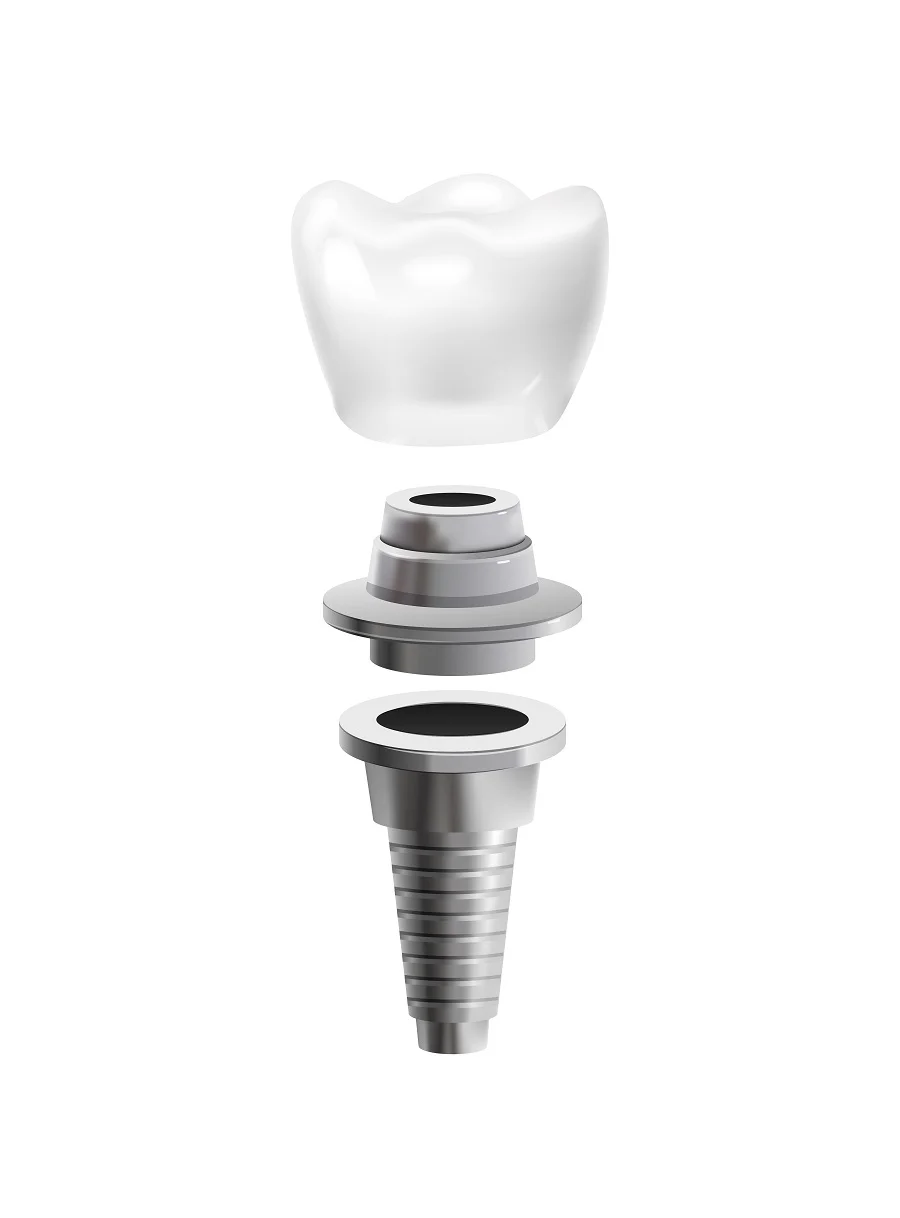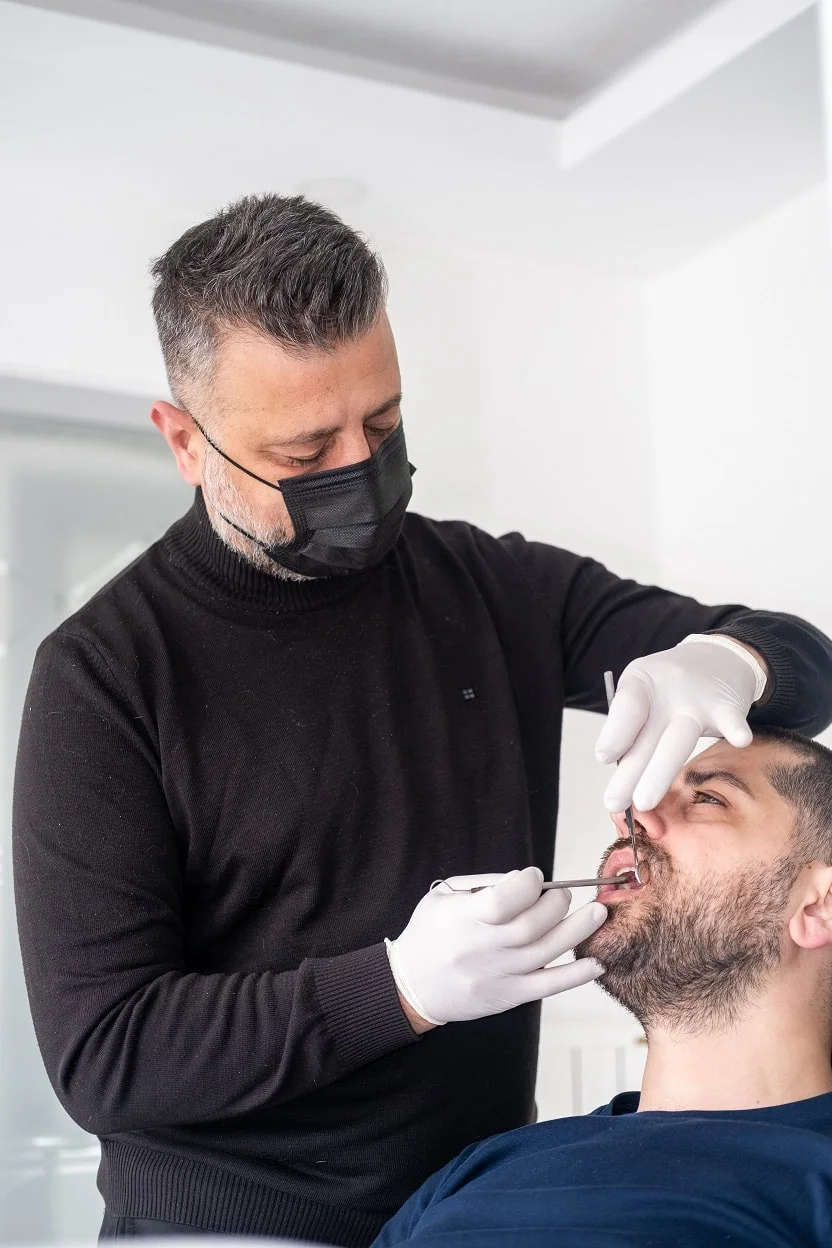
Implant Surgery and Implant-Supported Prostheses: A Functional and Aesthetic Approach
- Implant Surgery and Implant-Supported Prostheses: A Functional and Aesthetic Approach
- What Is Implant Surgery?
- Implant-Supported Prostheses: Combining Comfort and Aesthetics
- A Modern Solution for Edentulous Jaws: Bar-Retained Monolithic Zirconia Prostheses
- Conclusion: Multidisciplinary Expertise Is Key
Today, one of the most effective and widely preferred methods for treating tooth loss is the use of dental implants. Providing a solution that closely mimics natural teeth both functionally and aesthetically, implants offer patients a long-term improvement in their quality of life. However, achieving successful outcomes requires detailed planning, precise surgical execution, and careful prosthetic rehabilitation. In this article, I will cover the fundamentals of implant surgery, the types of implant-supported prostheses, and the advantages of using bar-retained monolithic zirconia prostheses in fully edentulous patients.
What Is Implant Surgery?
Implant surgery involves placing biocompatible screws—typically made of titanium—into the jawbone to replace missing teeth. These implants act as artificial tooth roots, providing a stable foundation for prosthetic teeth. When properly performed, implant treatment offers numerous advantages over traditional removable dentures, including better aesthetics, improved function, and preservation of the jawbone.
The process begins with a thorough evaluation of the patient’s general health and jawbone structure. If the bone has sufficient density and volume, implants are placed under local anesthesia. The procedure is generally well-tolerated, and most patients experience minimal discomfort during recovery.
Implant-Supported Prostheses: Combining Comfort and Aesthetics
Once the implant has successfully integrated with the jawbone, the next step is the placement of the prosthetic restoration. Implant-supported prostheses can be customized to suit a variety of clinical situations:
- For a single missing tooth: A porcelain crown is placed on top of the implant.
- For multiple missing teeth: Implant-supported bridges are used.
- For complete edentulism: Full-arch prosthetic solutions are designed.
These restorations closely resemble natural teeth in appearance and function, allowing patients to chew, speak, and smile confidently.

A Modern Solution for Edentulous Jaws: Bar-Retained Monolithic Zirconia Prostheses
In patients who have lost all their natural teeth, implant-supported bar-retained prostheses offer a reliable and comfortable solution. This approach involves placing several implants into the jawbone, which are then connected by a custom-fabricated bar. A monolithic zirconia prosthesis is securely fixed onto this bar.
Zirconia has become a material of choice in recent years due to its exceptional strength and natural appearance. Thanks to its light-transmitting properties, it mimics the translucency and color of real teeth. Bar-retained monolithic zirconia restorations provide both functional stability and aesthetic excellence, eliminating the discomfort often associated with traditional removable dentures.
Conclusion: Multidisciplinary Expertise Is Key
Implant-supported bar-retained zirconia prostheses, especially in fully edentulous cases, require a multidisciplinary approach—encompassing surgical, prosthetic, and periodontal expertise. Success relies heavily on the clinician’s knowledge and experience, from initial diagnosis to final prosthetic placement.
It’s important to remember that every patient is unique. Therefore, treatment planning should be individualized to meet each patient’s specific needs. A thorough consultation with a qualified dentist is essential to determine the most appropriate implant solution for optimal function and aesthetics.

Dr. Hüseyin Ferhat Dündar

